Aquaponics – Coupled cycles of fish and plants
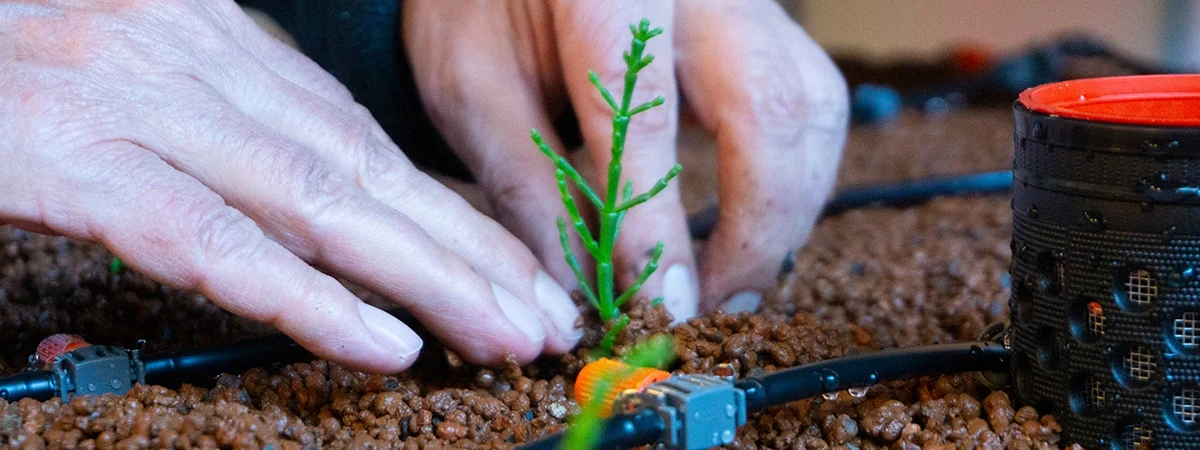
It is well known by now that sustainability in agriculture has not always been ideal in recent decades. There are obvious problems regarding water and land requirements, which are particularly evident in countries where resources are already scarce. These problems will probably intensify in the future facing the great global challenges of our time, above all the climate crisis and the extinction of species. But how can we counteract this and enable sustainable agriculture? One innovative approach is Aquaponics. For some years now, it has been attracting an increasing global interest from private individuals, scientists and entrepreneurs and is seen as one of the most attractive alternatives for realizing the agriculture of tomorrow. In the following, we will explain Aquqponics in more detail and how such systems are constructed.
What is Aquaponics?
Aquaponics is a novel and sustainable method of food production and is essentially the combination of two proven agricultural methods: aquaculture, the raising of aquatic organisms, and hydroponics, the soilless production of plants using an aqueous nutrient solution. The term itself is a portmanteau, composed of the names of the two methods (aquaponics = aquaculture + hydroponics).
Aquaponics solves existing sustainability problems of the individual systems by combining two food production processes. In the case of fish farming, the excreta of the animals, which are rich in plant nutrients, often enter the environment (e. g. in the case of net cages in the sea) and lead to overfertilization there. In the case of plant farming, there is a dependence on mineral fertilizers, which the plants need for an optimal growth. Aquaponics feeds the wastewater from fish farming to the plants for irrigation, so that the plants can use the excreta of the animals as fertilizer and no superfluous or unused nutrients are released into the environment. The plants can absorb the nutrients very efficiently and without much energy input, as they are already dissolved.
The structure of an Aquaponics system
Aquaponics systems can be implemented quite easily in principle, as both methods use water as the central medium. Existing components and parts of aquaculture technology can be used to a large extent.
At the beginning of an aquaponics system is a fish tank. This is aerated so that the animals have oxygen to breathe. The animals eat fish food and excrete it. The fish’s excrement, along with other waste materials such as urine and food residues, enters the water and is directed into the biofilter. This converts the urine of the animals (ammonium/ammonia) into nitrate. Subsequently, part of the water is passed through the skimmer, which removes bacteria and particles from the water. Another portion flows into a plant tank where it reaches the roots. In some systems the plants sit in a non-floating substrate (e. g. expanded clay or gravel) and are watered via drip valves, in other systems the plants sit in perforated tubes and the roots are continuously flushed with the water.
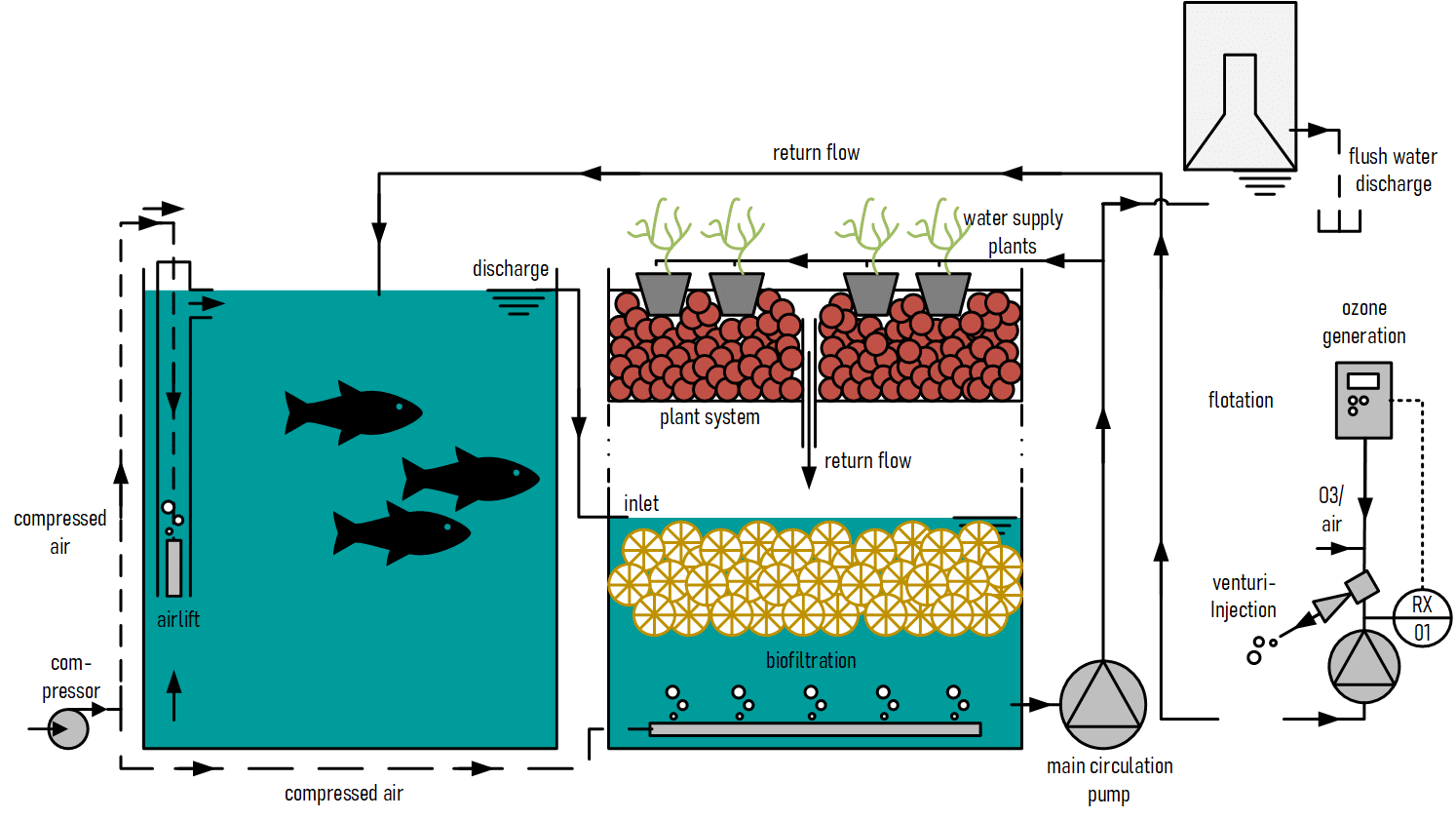
Structure of the SEAWATER aquaponics compact system
The assembly of an Aquaponics system can be mastered by practically inclined hobby gardeners or anglers themselves, if necessary. When it comes to operation, however, a deeper understanding of the biological processes is necessary. For example, the nutrient flows that take place in such a system must be calculated very precisely to provide optimal growth conditions for the plants and the fish. Here, depending on the fish species, appropriate expertise should be called upon.
Advantages of closed circuits
Aquaponics combines many advantages and thus can shape future agriculture in a sustainable way. Such systems are:
✓ Zerowaste: They help people think in terms of closed cycles and encourage them to find solutions for residual materials from food production.
✓ Resource-efficient: Water is also used very sparingly; apart from evaporation or plant uptake, no water is lost in closed systems. On the contrary, it is always purified and circulated.
✓ Environmentally friendly: Eutrophication of the soil (= overfertilization) is also avoided, as the plants utilize nitrate and phosphorus, and this does not enter the groundwater via the wastewater.
✓ Emission-free: The CO2 exhaled by the fish is converted to oxygen by the plants.
✓ Antibiotic-free: In principle, fish farms should always be designed and operated so that the fish grow up in optimal conditions and do not become sick. However, by integrating biofilters and plants, the use of antibiotics is avoided altogether, as these would otherwise harm the bacteria or vegetables and inhibit their growth.
What are the types of Aquaponics?
The type of aquaponics known so far is already being implemented in isolated large-scale projects and takes place in freshwater. Popular fish species for this are zander, catfish and tilapia. The vegetables often grown in this type of aquaponics are lettuce, tomatoes or herbs. However, there are also exciting new types of aquaponics already in development. These include systems that use salty water (saltwater aquaponics – maraponics, brackish water aquaponics – haloponics) or systems that involve worms (vermiponics) or algae (algeaponics).
We have also been involved in research into the coupling of fish and plant farming for a number of years. However, we are one of the first groups in Germany to work in saltwater. We see enormous potential in this area: on the one hand by producing attractive vegetable plants (such as sea asparagus) or algae, and on the other hand by improving the ecological footprint of fish farming in land-based facilities.
As part of the IBA Future Lab at htw saar, we have already set up a first demonstrator of our aquaponics technology. The system was presented in summer 2021 within a participatory future lab (FUTURE LAB) at the World Cultural Heritage Site Völklinger Hütte. and shows what modern food supply can look like.
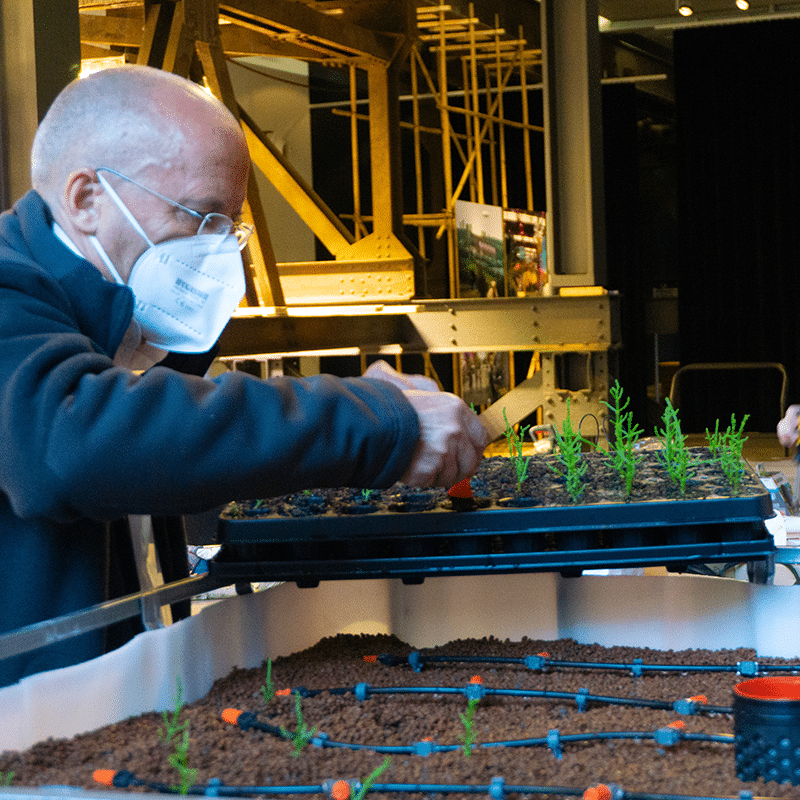
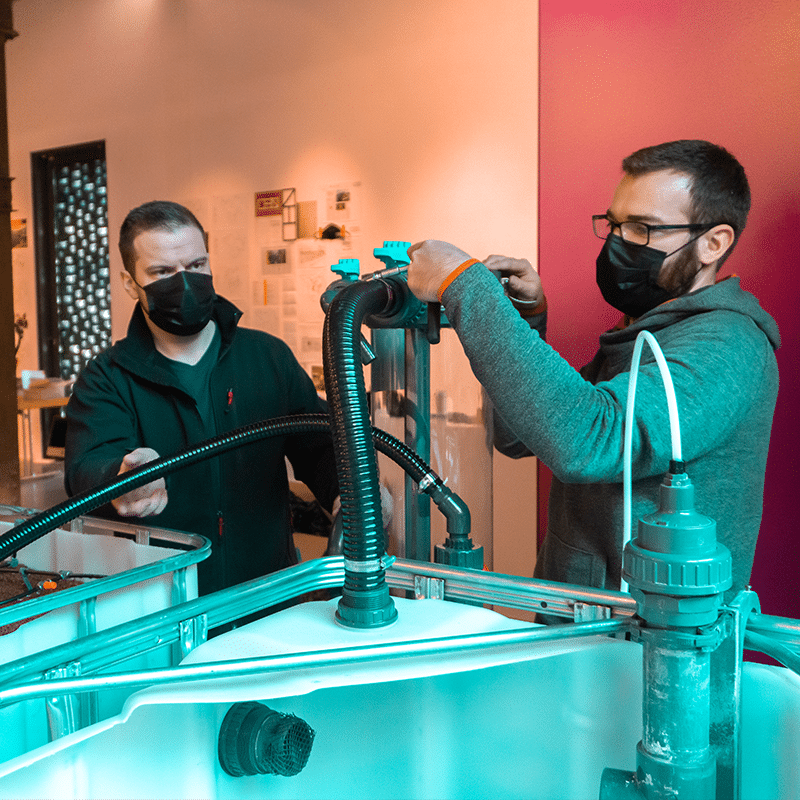
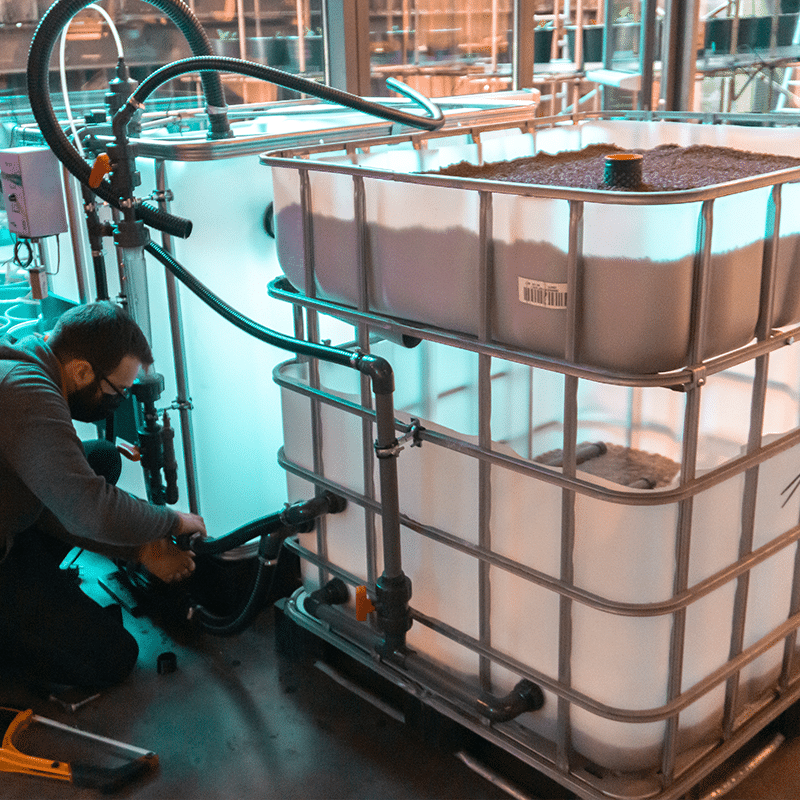
„The IBA32 project shows possibilities for future supply in urban areas. The SEAWATER cycle, a modern technology for the regional production of fresh fish, is a perfect fit for these visions. SEAWATER Cubes shows in the World Heritage Site Völklingen with its compact aquaponics plant how the integrated production of the future can look like: Nutrients from the fish production process flow into the production of vegetables, salads, fruits, similar to natural ecosystems. Aquaponics is THE concept for sustainable nutrition and efficient use of valuable resources.“
(Prof. Dr. Uwe Waller, mentor und marine biologist)
How does the future of coupled systems look like?
With the growing population and increasing urbanization, the challenges for a sustainable food supply are getting bigger. Aquaponics systems are well suited to be set up on a small area, even in cities. There, they can supply people in a decentralized manner and reduce transport distances to a minimum. Thanks to the low water consumption, the use of land for the installation of aquaponics is also conceivable in rather dry regions.
To date, however, there are no technically automated, production-ready systems that do little work and can represent an economic viability of both production units (fish & plant). In pilot projects, it will be necessary in the future to determine exact values for all relevant operating parameters and market prices, as well as to conduct sales tests in the sales market with the products from larger demonstrators. Containers appear to be an exciting solution for a modern plant farm that operates vertically and can be placed next to a containerized fish farm. Let us see when or with which partners we can tackle this topic on a larger scale.…
References:
- Goddek, Simon, Alyssa Joyce, Sven Wuertz, Oliver Körner, Ingo Bläser, Michael Reuter, and Karel J. Keesman. 2019. ‚Decoupled Aquaponics Systems.‘ in Simon Goddek, Alyssa Joyce, Benz Kotzen and Gavin M. Burnell (eds.), Aquaponics Food Production Systems: Combined Aquaculture and Hydroponic Production Technologies for the Future (Springer International Publishing: Cham).
- Joyce, Alyssa, Simon Goddek, Benz Kotzen, and Sven Wuertz. 2019. ‚Aquaponics: Closing the Cycle on Limited Water, Land and Nutrient Resources.‘ in Simon Goddek, Alyssa Joyce, Benz Kotzen and Gavin M. Burnell (eds.), Aquaponics Food Production Systems: Combined Aquaculture and Hydroponic Production Technologies for the Future (Springer International Publishing: Cham)
- Lennard, Wilson, and Simon Goddek. 2019. ‚Aquaponics: The Basics.‘ in Simon Goddek, Alyssa Joyce, Benz Kotzen and Gavin M. Burnell (eds.), Aquaponics Food Production Systems: Combined Aquaculture and Hydroponic Production Technologies for the Future (Springer International Publishing: Cham).
- Maucieri, Carmelo, Carlo Nicoletto, Erik van Os, Dieter Anseeuw, Robin Van Havermaet, and Ranka Junge. 2019. ‚Hydroponic Technologies.‘ in Simon Goddek, Alyssa Joyce, Benz Kotzen and Gavin M. Burnell (eds.), Aquaponics Food Production Systems: Combined Aquaculture and Hydroponic Production Technologies for the Future (Springer International Publishing: Cham).
- https://www.sueddeutsche.de/wirtschaft/bauern-landwirtschaft-nachhaltigkeit‑1.4520651, abgerufen am 20.05.21
- Picture source: SEAWATER Cubes